Samuel Richardson’s Pamela; or, Virtue Rewarded was an instant bestseller when it was published in 1740. The story of a servant girl who resists the advances of her master, ‘Mr. B.’, and eventually converts him to marriage, launched prints, playing cards, and plays. Among the most enduring responses are the series of 12 Pamela paintings produced by the portrait and history painter Joseph Highmore (1692–1780), four of which are on display in ‘Basic Instincts’ at the Foundling Museum.
Highmore initially trained as a lawyer. He joined the Great Queen Street Academy led by the ageing Sir Godfrey Kneller, in 1713. By the 1740s, when he produced his Pamela series, he was at the peak of his career. Richardson, a novelist with a particular visual sensitivity, was so pleased with the paintings that he put a nod to the painter in a meta-fictional footnote to his next novel, Clarissa (1748). But after his death in 1780, Highmore’s star fell so precipitously that by the 19th century two of his most ambitious paintings, Mr Oldham and his Guests (1735–35) and The Angel of Mercy (c. 1745), had been reattributed to his contemporary and colleague, William Hogarth.
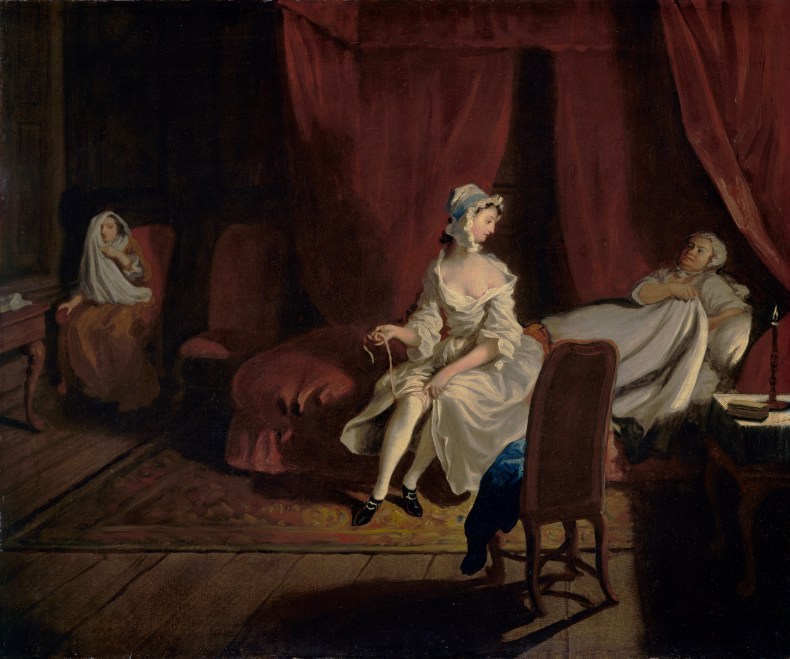
Pamela in the Bedroom with Mrs Jewkes and Mr B. (1743–44), Joseph Highmore. Tate, London
Highmore’s Pamela series obviously relates to Hogarth’s ‘Modern Moral Subjects’, including the contemporaneous Marriage à la Mode, though the ‘progress’ they show is ‘virtue rewarded’, not vice punished. Like the ‘progresses’, they are snapshots from a longer story, ‘pregnant moments’ where several outcomes still seem possible. Unlike Pamela’s authorised illustrators, Hubert-François Gravelot and Francis Hayman, who focused on Pamela’s marriage and entrance into ‘high life’, Highmore weighted his paintings to the battle of wills between Pamela and Mr. B.
In Mr B. and Pamela in the Summer House, while the characters’ body language recalls courtly dances, Pamela’s ruffled clothes and Mr B’s firm grip also suggest incipient sexual violence, apparently unnoticed by the passer-by glimpsed through the window. In the next scene, Pamela undresses for bed, Highmore laying her tender body out for the viewer’s consumption, lit by a single candle. The viewer’s more ambivalent moral position is reflected in the scene’s onlooker, Richardson’s villainous Mrs Jewkes, who watches from the corner, with glee. Pamela has not yet realised that Mr. B is in the bed, waiting for her.
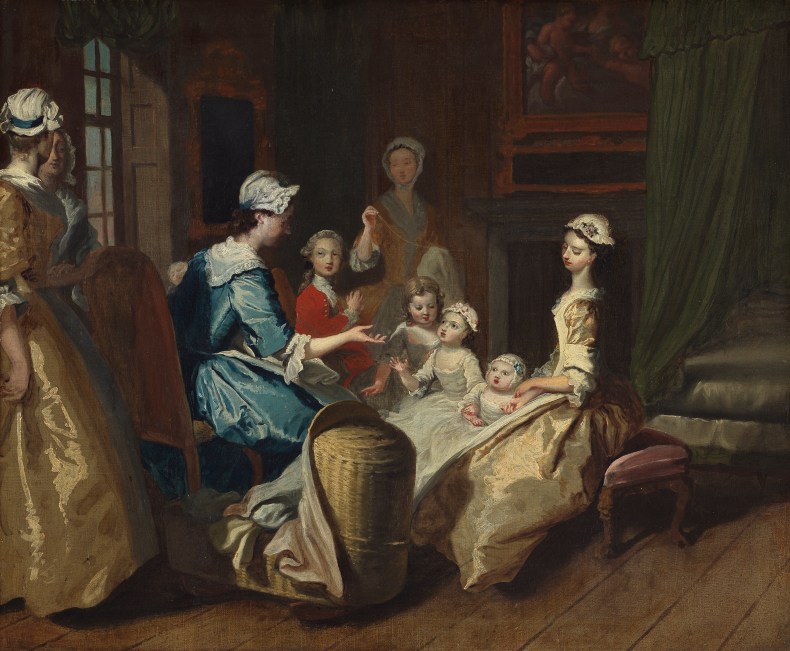
Pamela tells a Nursery Tale (c. 1744), Joseph Highmore. Fitzwilliam Museum, Cambridge
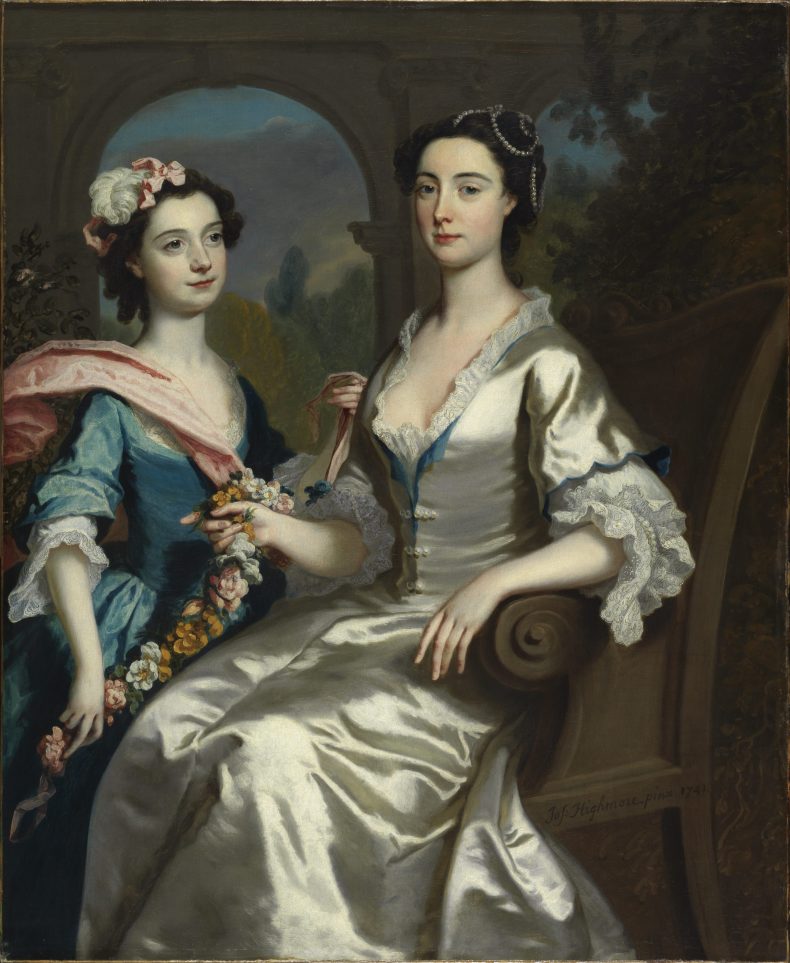
Mrs Elizabeth Birch and her daughter (1741), Joseph Highmore. Fitzwilliam Museum, Cambridge
Highmore insists on these onlookers, some of whom are merely neglectful, others actively harmful. They recall the parson at the beginning of Hogarth’s Harlot’s Progress, who doesn’t notice the naive Moll Hackabout talking to the bawd, Mother Needham. Yet they also contrast with those charitable figures, arriving or still wished-for, who intervene. Uninterested passers-by stalk the background of Highmore’s large-scale Good Samaritan (1744), a biblical subject that Mr. B. also has on his wall, in the first Pamela painting. He seems oblivious to its reflection on his servant’s vulnerability: her need for friends; her struggles to find them. Pamela ends with the heroine telling stories to a row of pink-cheeked children, but Highmore’s paintings suggest that an alternative, violent outcome was always possible.
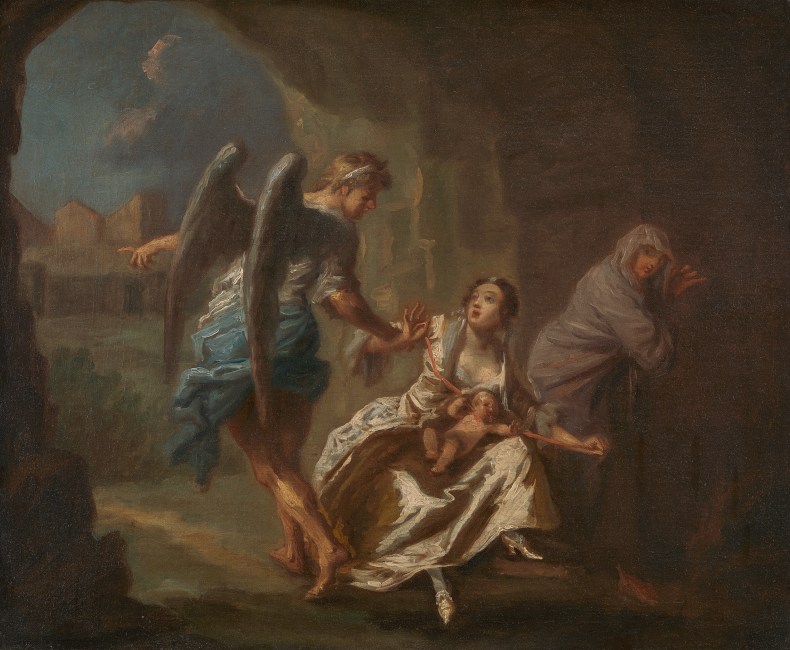
The Angel of Mercy (c. 1746), Joseph Highmore. Yale Center for British Art
A tragic possibility, for a less fortunate serving girl, does indeed appear in his extraordinary Angel of Mercy. At its foundation by Thomas Coram in 1739, the Foundling Hospital sought to rid shallow graves of dead babies, and scaffolds and backstreets of infanticidal mothers. Highmore’s sketchlike composition shows one such, in a chiaroscuro-lit cave, with a ribbon for a murder weapon – a bitter reminder of Highmore’s adjacent portraits of happy motherhood, the glittering Mrs Elizabeth Birch and her Daughter (1741) and Mrs Sharpe and her Child (1731), where ribbons carry children’s coral toys, or bind garlands of marital flowers. The descending angel reflects the Hospital’s active intervention in such stories, in contrast to the dubious cloaked figure watching from the corner. Hogarth’s own depiction of the Hospital, The Foundlings, displayed nearby, shows a weeping mother slowly moving towards redemption, but Highmore’s angel is firm. Grasping the mother by the hand, he pulls her out from the shadows. Now, the Foundling Museum brings Highmore, too, into the light.
‘Basic Instincts’ is at the Foundling Museum, London, until 7 January 2018.
Unlimited access from just $16 every 3 months
Subscribe to get unlimited and exclusive access to the top art stories, interviews and exhibition reviews.

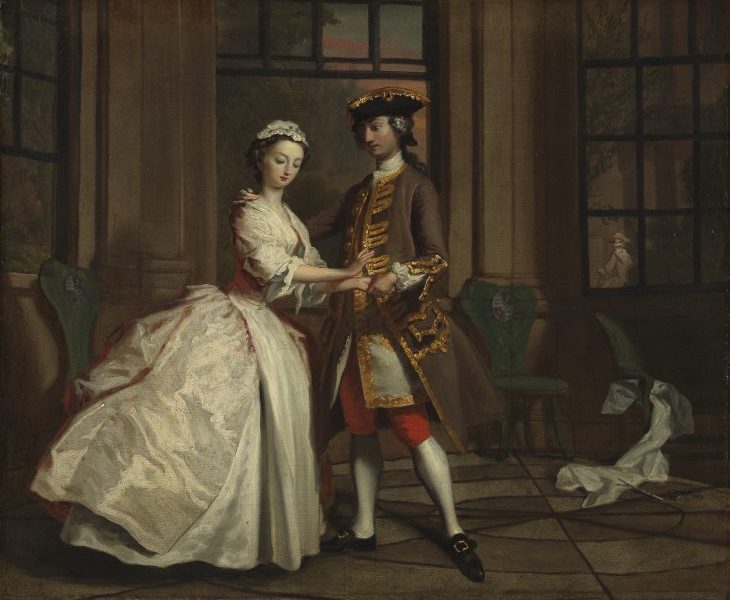
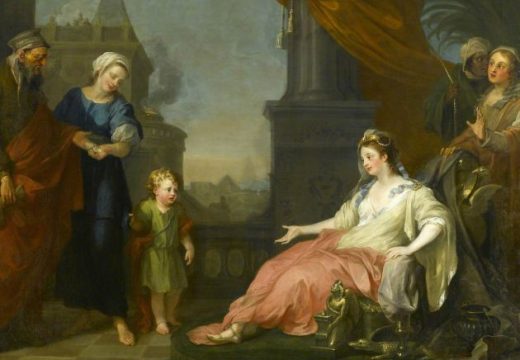
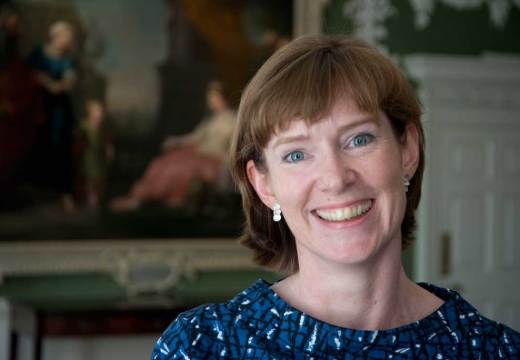
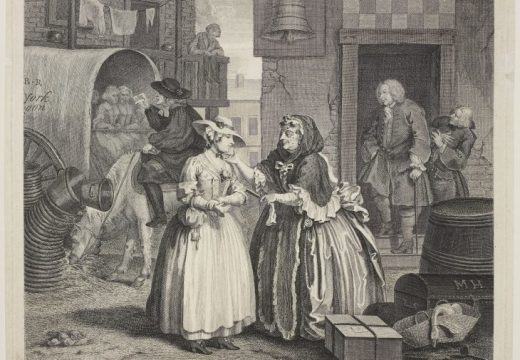









![Masterpiece [Re]discovery 2022. Photo: Ben Fisher Photography, courtesy of Masterpiece London](http://www.apollo-magazine.com/wp-content/uploads/2022/07/MPL2022_4263.jpg)
Has the Fitzwilliam got its rehang right?